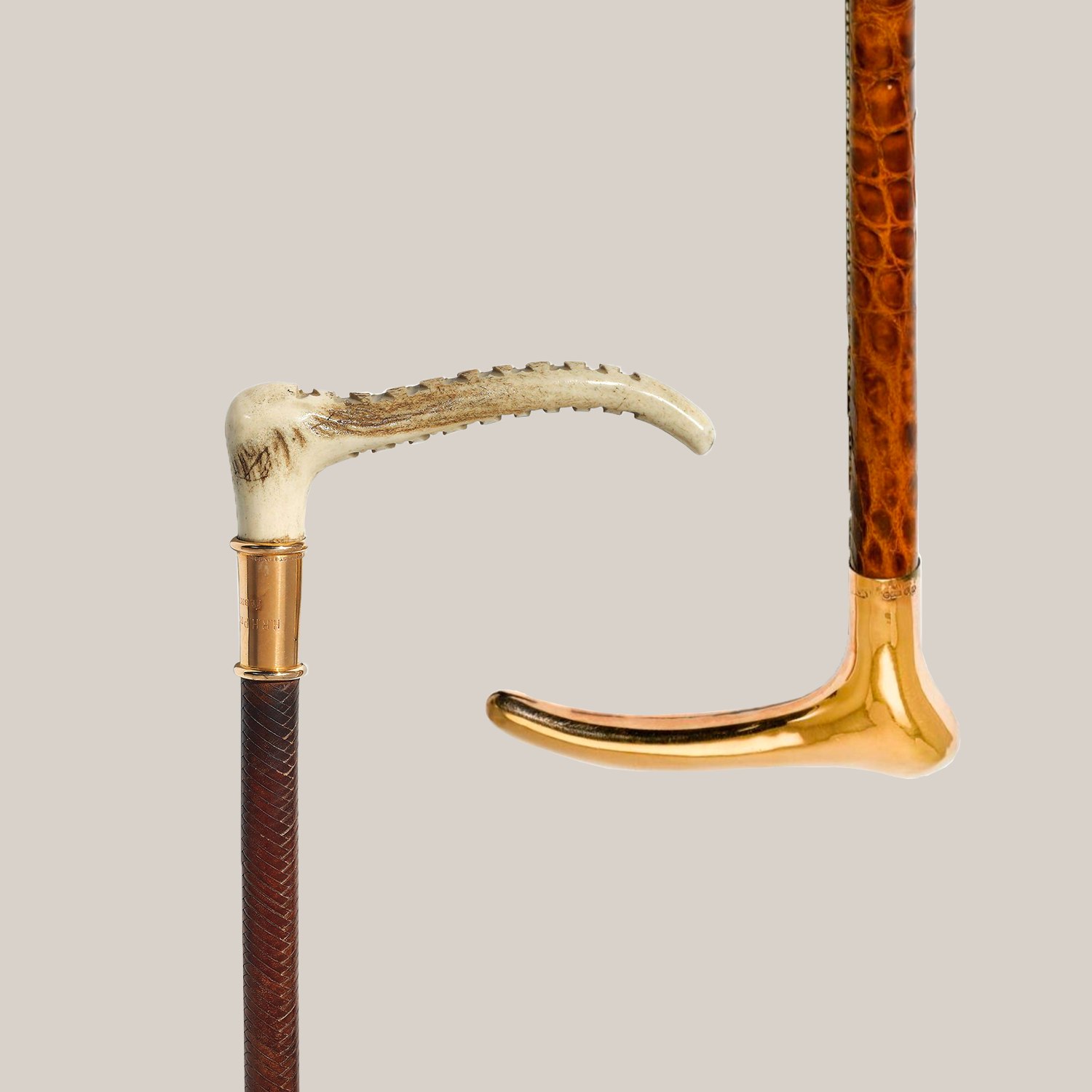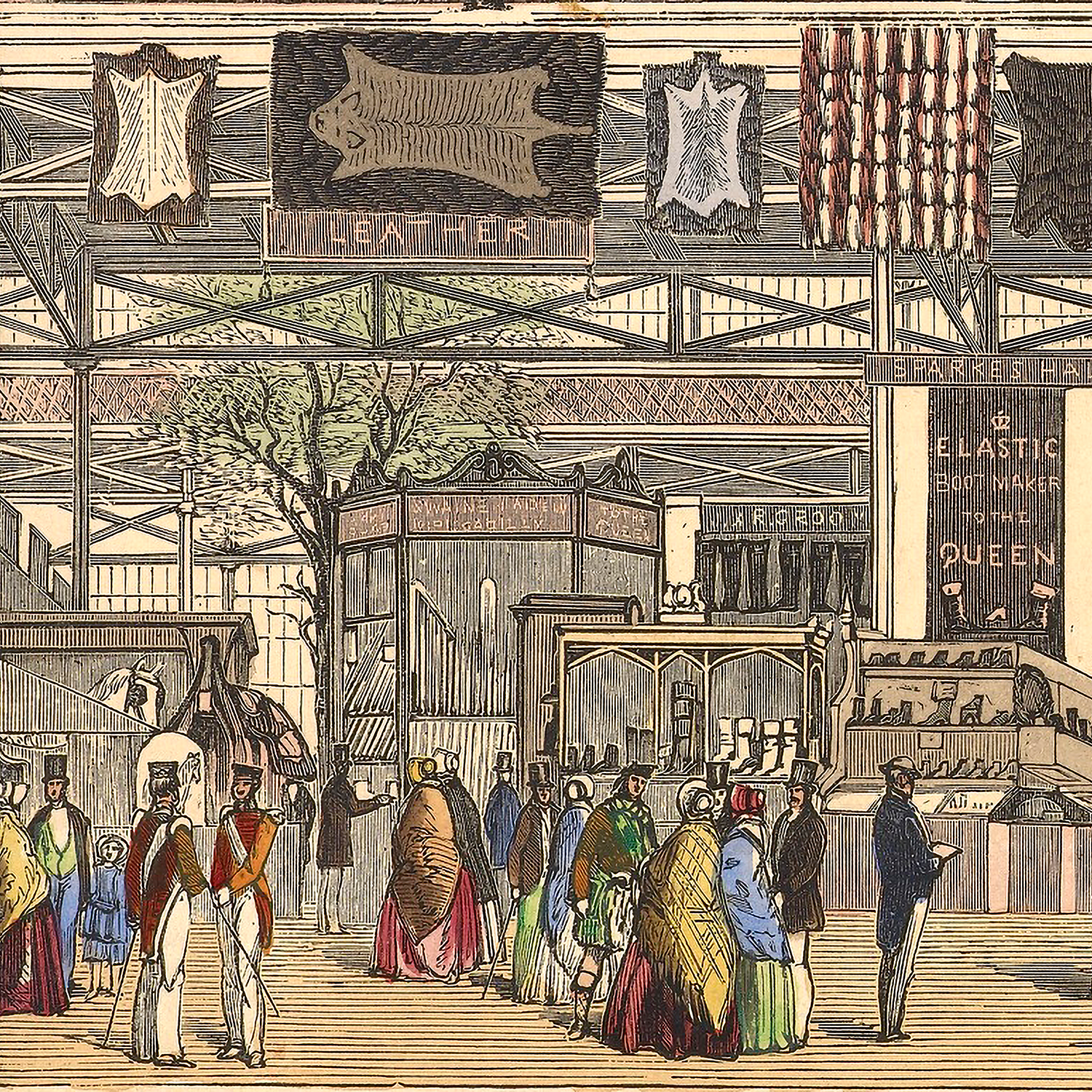Swaine's Hunting whips

Swaine boasts a rich heritage dating back to 1750, primarily rooted in crafting hunting whips. However, until 1825, Swaine exclusively focused on retailing whips due to the significant demand in the pre-railway era.
Swaine's account book chronicles the surge in popularity of the leisurely pursuit of horseback riding and hunting during the late 1810s, evident in the increasing sales of four-horse whips.
This trend mirrors the transition in the 18th century from coaching with postilions to box driving. While coaching was predominantly a male-dominated activity, the rare women capable of commanding a four-horse coach were regarded as daring and formidable.

Hunting Whip Composition
Holly and birch sticks served as the primary materials for the shafts of driving or carriage whips, with regular deliveries from Kent, Sussex, and Hampshire to Swaine. Particularly prized was the 'rabbit-bitten holly', distinguished by its textured, mottled pattern left by rabbits, which polished up beautifully.
Bamboo and cane, known for their lightweight properties, were commonly used for the shafts of hunting whips, while whalebone or baleen found application in the stocks of riding crops.

Seasonality of the Whip Industry
The trade in whips followed a seasonal pattern, with peak activity observed in cosmopolitan hubs like London and Paris from April to July. During this time, sales of driving whips surged as affluent households refreshed their driving equipment and prepared for the social season. James Swaine often embarked on promotional tours across the British Isles between July and August, capitalising on the drier road conditions.
Sales of riding whips also experienced a notable increase from August to October, aligning with the gentry's engagement in the hunting season with their horses.
From November to March, whip sales typically slowed down, reflecting a quieter period in the market. However, as the century progressed, Christmas emerged as an increasingly significant period for sales.

A Royal Audience
In 1837, Swaine & Isaac solidified their elite reputation with a converted appointment as whip-makers to the new queen, Victoria. This followed their previous royal designation by George IV and subsequent reappointment by his brother, William IV, the former Duke of Clarence, after George IV's demise in 1830.
The early whips crafted for Queen Victoria by Swaine & Isaac likely served more as fashion accessories than functional equestrian tools. However, this perception began to shift around the 1860s with the advent of the two-pommelled side saddle, revolutionising the riding experience for genteel women. This innovation allowed them to gallop and jump safely, transforming women's whips from mere adornments into functional implements. As aristocratic women gained the ability to fully participate in hunts without compromising modesty, many surviving antique ladies' whips evolved into hunting whips, featuring L-shaped handles crafted from antler or horn, ideal for opening and closing gates.

By the 1830s, they had attracted European royals to their esteemed clientele, including the Kings of France, such as Louis Philippe. However, their domestic and international reputation soared in the 1850s, notably following their recognition at the Great Exhibition in 1851. Winning a prize medal for their collection of whips and canes in the leather category, their exhibit, particularly a globe-adorned showpiece whip, garnered significant attention. Despite their hefty price tags, these luxurious mounts served as captivating centrepieces that commanded media coverage, elevating whips and walking sticks into objects of glamour.
In addition to their accolades at the London exhibitions of 1851 and 1862, Swaine & Isaac garnered awards at various international exhibitions and world fairs, including those in Paris (1855, 1867 and 1889), Dublin (1865), Vienna (1873), Philadelphia (1876), and Chicago (1893). Their crowning achievement came in 1900 when they secured the Grand Prix at the Exposition Universelle in Paris.
As the railway industry encroached on the market for coaching whips, Swaine & Isaac strategically redirected their focus towards cultivating clientele among hunting and horse racing enthusiasts. The Prince of Wales emerged as a prominent advocate for these pursuits, earning praise from manufacturers and sporting press alike. In October 1902, he registered the maker's mark "E S A" with the London Assay Office, a mark that would henceforth adorn the silver and gold collars of the company's whips and sticks, solidifying their reputation as premier artisans in their field.

Competitor Acquisition of Zair
Despite their concerted efforts, the whip market faced a decline. While agriculture and local transport continued to rely on horse power well into the next war, the demand for whips in these sectors largely bypassed high-end products like those crafted by Swaine & Adeney. Recognising the future of whips lay predominantly in elite equestrian sports and hunting, they adopted a two-pronged approach: bolstering their presence in the quality whip market and diversifying into new product lines.
In early 1927, they acquired Zair of Birmingham, one of their major whip rivals known for its substantial international market presence, particularly in Australasia, South Africa, and the Americas. Swaine & Adeney preserved the esteemed Zair brand, acknowledging its value and aiming to maintain its integrity.

Upon assuming control, significant decisions loomed. The lease on Zair's Birmingham factory expired in 1965, and Swaine & Adeney original manufacturing site at Newbury Street faced compulsory purchase for the construction of the Barbican Estate. Robert opted to consolidate manufacturing operations at a single freehold site, selecting a factory in School Street, Great Chesterford, Essex, which commenced operations in 1968. In addition to their traditional offerings of whips, sticks, umbrellas, and luggage, the company ventured into saddle and bridle production. Former army officer Major John Weaver advised Robert Adeney on these new endeavours, leveraging the company's expertise in leatherworking and longstanding connections in the equestrian world. Weaver later assumed the role of general manager at the Piccadilly shop, his stature and military demeanour lending an air of authority to the establishment.
As of 1893, Swaine & Adeney predominantly operated as whip manufacturers. While they retailed various items, including walking sticks, whips constituted the core of their manufacturing business. The advent of the motor car would eventually alter this landscape, though the pace of that transformation would have been difficult to predict in 1893.

Brigg Whips
In 1838, just a decade after Thomas established his business, John Tallis produced a pictorial plan of St. James's Street, delineating its various merchants. Number 23 was identified as Brigg - specialising in umbrellas, canes, and whips.
Sales records reveal that from April to July, urban centres like London experienced peak demand for driving whips, as affluent households refreshed their equipment for social outings during the high season. Subsequently, August to October witnessed heightened sales of riding whips, coinciding with the hunting season when the gentry frequented the countryside with their horses. Conversely, November to March traditionally marked a slower period, although the significance of Christmas in the sales cycle increased over the century.
Swaine's account book documents the surge in leisure activities in the late 1810s, evidenced by the growing sales of four-horse whips. This trend reflects a transition from coach driving with postilions to driving from the box, characteristic of the 18th century.















